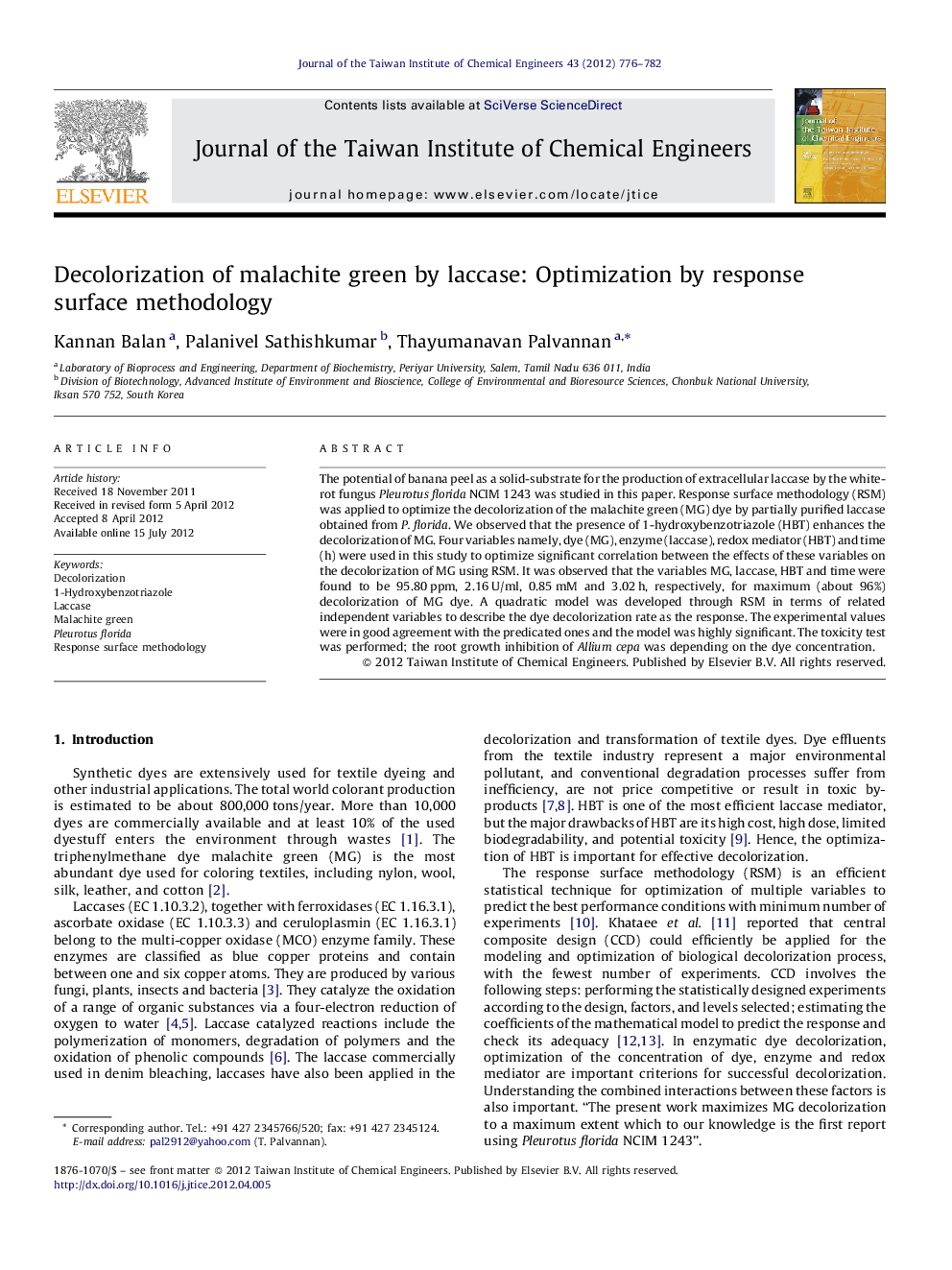| کد مقاله | کد نشریه | سال انتشار | مقاله انگلیسی | نسخه تمام متن |
|---|---|---|---|---|
| 691809 | 1460442 | 2012 | 7 صفحه PDF | دانلود رایگان |

The potential of banana peel as a solid-substrate for the production of extracellular laccase by the white-rot fungus Pleurotus florida NCIM 1243 was studied in this paper. Response surface methodology (RSM) was applied to optimize the decolorization of the malachite green (MG) dye by partially purified laccase obtained from P. florida. We observed that the presence of 1-hydroxybenzotriazole (HBT) enhances the decolorization of MG. Four variables namely, dye (MG), enzyme (laccase), redox mediator (HBT) and time (h) were used in this study to optimize significant correlation between the effects of these variables on the decolorization of MG using RSM. It was observed that the variables MG, laccase, HBT and time were found to be 95.80 ppm, 2.16 U/ml, 0.85 mM and 3.02 h, respectively, for maximum (about 96%) decolorization of MG dye. A quadratic model was developed through RSM in terms of related independent variables to describe the dye decolorization rate as the response. The experimental values were in good agreement with the predicated ones and the model was highly significant. The toxicity test was performed; the root growth inhibition of Allium cepa was depending on the dye concentration.
► The potential of banana peel as a solid-substrate for the production of extracellular laccase.
► The optimization, maximum decolorization efficiency was 96%.
► This will enable proper biochemical analysis of industrial effluent in order to identify the constituent that is really toxic and its prompt removal from the effluent before discharge.
Journal: Journal of the Taiwan Institute of Chemical Engineers - Volume 43, Issue 5, September 2012, Pages 776–782